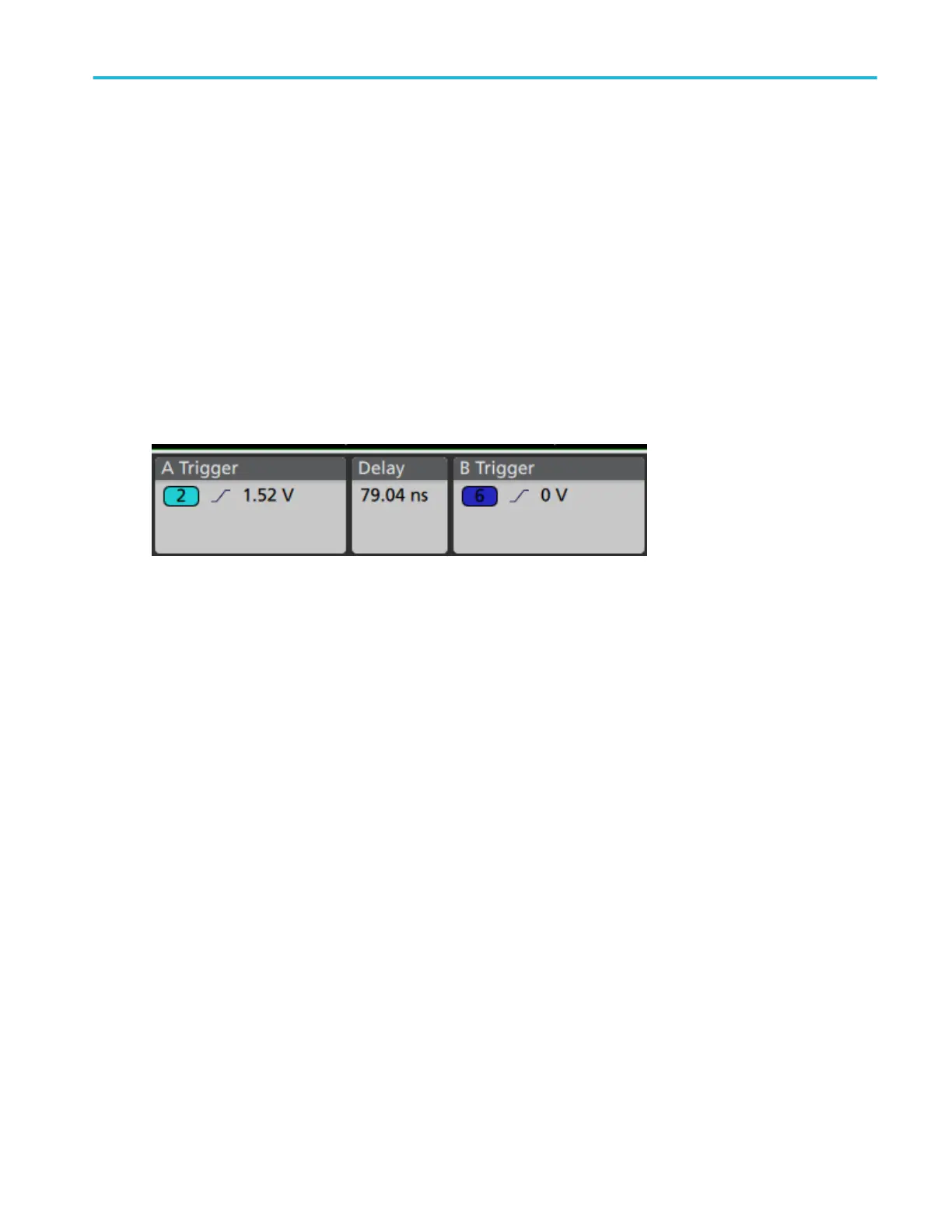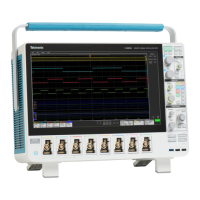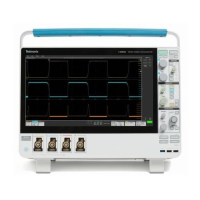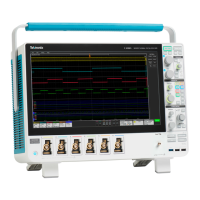Trigger delay
Use the Trigger Delay to trigger the instrument a specified period of time after the A trigger. After the A trigger arms the trigger
system, the instrument triggers on the next B trigger event that occurs after the time that you specify.
You can trigger with the A trigger system alone or you can combine the A trigger with the B (Delayed) trigger to trigger on
sequential events. When using sequential triggering, the A trigger event arms the trigger system, and the B trigger event triggers
the instrument when the B trigger conditions are met.
A and B triggers can (and typically do) have separate sources. The B trigger condition can be based on a time delay or a
specified number of counted events.
Advanced triggering
You can check the advanced trigger status in the settings bar. The readout indicates the trigger type and then shows sources,
levels, or any other parameters that are important for the particular trigger type.
Bus triggering concepts
A bus trigger occurs when a supported instrument detects a bus pattern that you specify for a parallel bus, or a bus cycle you
select for a serial bus.
You can set the instrument to trigger on a parallel bus when the instrument detects a match to the bus pattern, or when the
instrument detects that the value on the bus is < or > the value of the bus pattern. The pattern can be in Binary or Hex format.
You can set the instrument to trigger on an SPI bus when the instrument detects an SS Active bus cycle or Data.
You can set the instrument to trigger on an I2C bus when the instrument detects a Start, Stop, Repeated Start, Missing Ack,
Address, Data, or Addr + Data bus cycle or activity.
You can set the instrument to trigger on a USB bus when the instrument detects a Sync, Reset, Suspend, Resume, End of
Packet, Token (Address) Packet, Data Packet, Handshake Packet, Special Packet, or Error bus cycle or activity.
You can set the instrument to trigger on an RS232 bus when the instrument detects a Start, End of Packet, Data, or Parity Error
bus cycle or activity.
You can set the instrument to trigger on an CAN bus when the instrument detects a Start of Frame, Type of Frame, Identifier,
Data, Id and Data, End of Frame, Missing Acq, or Bit Stuffing Error bus cycle or activity.
You can set the instrument to trigger on an LIN bus when the instrument detects a Sync, Identifier, Data, Identifier & Data,
Wakeup Frame, Sleep Frame, or Error bus cycle or activity.
You can set the instrument to trigger on an FlexRay bus when the instrument detects a Start of Frame, Indicator Bits, Frame Id,
Cycle Count, Header Fields, Data, Identifier & Data, End of Frame, or Error bus cycle or activity.
You can set the instrument to trigger on an Ethernet bus when the instrument detects a Start of Frame, MAC Address, MAC
Length/Type, IP Header, TCP Header, Client Data, End of Packet, Idle, or FCS (CRC) Error bus cycle or activity.
You can set the instrument to trigger on an AUDIO bus when the instrument detects a Word Select, or Data bus cycle or activity.
For all the serial standard buses, you can also set the component threshold levels through the Bus Setup menu
Trigger concepts
MSO54, MSO56, MSO58, MSO58LP, MSO64 Help 423

